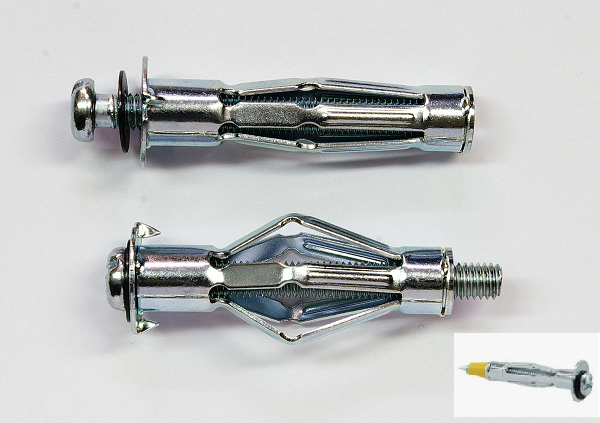Molly Bolts: The Ultimate Guide to Their Use, Benefits, and Installation

Molly Bolts
In the vast world of fasteners, there’s a hero that often goes unnoticed, yet is essential for hanging heavy items on walls: the Molly bolt. Whether you’re a DIY enthusiast, a homeowner looking to redecorate, or a professional contractor, understanding the function and benefits of Molly bolts can be a game-changer. This comprehensive guide aims to shed light on everything you need to know about Molly bolts.
Also Read:- Various Things Related to Bar Crusher Boat Problems
1. What is a Molly Bolt?
A Molly bolt, commonly referred to simply as a ‘Molly,’ is a type of wall fastener designed specifically for hollow walls, such as drywall or plaster. It consists of a metal sleeve that expands behind the wall, distributing the load and ensuring a secure hold.
2. Why Use Molly Bolts?
Strength and Stability: One of the primary reasons to choose Molly bolts is their exceptional holding power. When installed correctly, they can support heavier loads than many other wall anchors, making them perfect for hanging shelves, heavy artwork, or wall-mounted TVs.
Versatility: Molly bolts work excellently in hollow walls, but they’re also suitable for solid walls, making them versatile choices for various wall types.
Ease of Installation: With the right tools, Molly bolts are relatively easy to install, even for beginners.
3. Different Types of Molly Bolts
While the fundamental principle remains the same, Molly bolts come in various sizes and configurations. The size and type you’ll need largely depend on the weight and size of the object you’re hanging and the nature of your wall.
4. Installation Steps
- Mark Your Spot: Decide where you want to install the Molly bolt and mark the spot with a pencil.
- Pre-drill: Using a drill bit slightly smaller than the diameter of your Molly bolt, drill a hole in your marked spot.
- Insert the Molly Bolt: Push the Molly bolt into the drilled hole until the head is flush against the wall.
- Expand the Anchor: Using a screwdriver, turn the screw clockwise. As you turn the screw, the metal sleeve will expand behind the wall, creating a firm anchor.
- Attach Your Item: Once the Molly bolt is securely anchored, you can remove the screw, attach your item, and then replace the screw.
5. Potential Issues and Solutions
Over-tightening: Avoid over-tightening the screw, as it can damage the wall or the bolt itself. Tighten until it feels secure, but not forceful.
Incorrect Size: Always ensure you choose the right size of Molly bolt for the weight of the item you’re hanging.
Removing Molly Bolts: If you ever need to remove a Molly bolt, the process is slightly more involved than removing a regular screw. You’ll need to unscrew the bolt and then carefully cut or snap off the protruding metal behind the wall.
6. Benefits Over Other Wall Anchors
While there are various wall anchors available, Molly bolts offer several advantages:
- Higher Weight Capacity: They can support more weight than many plastic wall anchors.
- Durability: The metal construction of Molly bolts ensures they last longer and remain stable.
- No Backside Access Required: Some wall fasteners require access to both sides of the wall. With Molly bolts, everything is done from one side.
7. Conclusion
Molly bolts, with their robust and reliable design, stand out as an excellent choice for ensuring heavy items remain securely attached to walls. Whether you’re a DIY rookie or a seasoned professional, having a good understanding of Molly bolts and their installation process can simplify many wall-hanging projects, ensuring safety and stability. So the next time you’re thinking of hanging that heavy mirror or artwork, consider reaching for a Molly bolt.
FAQs: Molly Bolts
Q1: What is a Molly Bolt?
Answer: A Molly bolt is a specialized type of wall fastener designed for hollow walls, such as drywall or plaster. It has a metal sleeve that expands behind the wall when a screw is inserted, offering a secure hold for hanging items.
Q2: Why should I choose Molly Bolts over other anchors?
Answer: Molly bolts are known for their superior holding power, especially in hollow walls. They can support heavier loads than many plastic anchors and are versatile, suitable for both hollow and solid walls.
Q3: How do I select the right size of Molly Bolt?
Answer: The size of the Molly bolt you should choose depends on the weight of the item you’re hanging and the nature of your wall. Always refer to the manufacturer’s guidelines for weight capacities and select a size that can adequately support the weight of your item.
Q4: Can I use Molly Bolts on solid walls?
Answer: While Molly bolts are primarily designed for hollow walls, they can also be used in solid walls. However, it’s essential to ensure the bolt’s sleeve can expand adequately and securely.
Q5: How do I remove a Molly Bolt?
Answer: To remove a Molly bolt, first unscrew the bolt. Once the screw is out, you might need to use pliers to cut or snap off the metal sleeve behind the wall. Be cautious to avoid damage to the wall.
Q6: Is it possible to over-tighten a Molly Bolt?
Answer: Yes, over-tightening can potentially damage the wall or the Molly bolt itself. It’s essential to tighten the bolt until secure, but not forceful, to prevent any issues.









